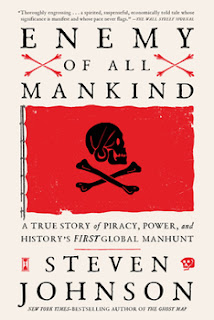Nexus: A Brief History of Information Networks from the Stone Age to AI by Yuval Noah Harari
Harari emphasizes that while information networks have been instrumental in human development, they also pose significant risks when misused. As we stand on the brink of an AI-driven future, the choices we make about information dissemination and control will determine whether we enhance our collective well-being or succumb to new forms of tyranny
Harari argues that information’s most fundamental role is not to represent truth but to connect—to create powerful networks. Understanding this is essential if we want to grasp how humans organize, how myths survive, and how AI might impact society.
🔥 In Nexus, Harari uses the myth of Phaethon as a warning story:
-
Phaethon represents humans who demand access to great powers (like Helios' chariot — or modern technology) without understanding or controlling them.
-
Like Phaethon losing control of the sun chariot and nearly destroying the earth, Harari warns that humans today are creating technologies (like AI and nuclear weapons) that could spin out of our control and cause global catastrophe.
-
He points out that the myth blames the tragedy on individual human flaws—hubris (overconfidence) and lack of wisdom.
-
But Harari disagrees with this simple moral:
He says the real problem is not just individual mistakes, but the way human societies build vast networks that amplify collective delusions and risky behavior.
Harari uses Phaethon’s myth to show that humanity’s danger today isn't just bad individuals—it’s flawed information networks and mass cooperation around bad ideas.
🧹 The Story: The Sorcerer's Apprentice
-
Origin:
This story comes from a poem by Johann Wolfgang von Goethe (written in 1797), later made famous by Disney's Fantasia (with Mickey Mouse). -
What happens:
A young apprentice is left alone in the wizard's workshop.
To make his job easier (carrying water from the river), he casts a magic spell on a broomstick to do the work for him. -
Problem:
The apprentice doesn't know how to stop the enchanted broom.
The broom keeps fetching water—flooding the workshop. -
In panic, the apprentice splits the broom with an axe, but now two brooms start fetching water, making things even worse.
-
Finally, the master sorcerer returns, breaks the spell, and restores order.
🕊️ Pigeons and the Nature of Information
🐦🐦 In Nexus, Story of two pigeons
| Story | Cher Ami (Lost Battalion) | NILI Spy Network (Palestine) |
|---|---|---|
| What happened? | A pigeon carried a clear message to save trapped American soldiers during WWI. | A spy pigeon carrying coded messages accidentally exposed a secret Jewish spy ring. |
| How was information conveyed? | Through a written message attached to the pigeon’s leg. | Simply by being a pigeon in the wrong place — even without reading the message. |
| Key insight about information | Symbols (words) carried meaning; the pigeon itself was unaware. | The existence of the pigeon was enough to signal danger and reveal secret operations. |
| Broader lesson | Information can save lives even when the carrier doesn’t understand it. | Anything—object, animal, or sign—can become information depending on context and interpretation. |
Harari uses these two pigeon stories to show that information is not about awareness or truth alone — it’s about how things are interpreted and connected into networks.
A pigeon, whether carrying words or just existing in the wrong place, becomes a crucial information node.
Sarah Aaronsohn, a leader of the NILI spy network, chose suicide over betrayal when captured by the Ottomans. Tortured brutally, she died protecting her comrades and their mission.
🧠 Harari’s Interpretation in Nexus:
-
Stalin’s cold rejection wasn't just about personal ruthlessness — it served a political and symbolic purpose.
-
By refusing to save even his own son, Stalin branded himself as the ultimate leader who placed the state above personal ties.
-
This act strengthened his myth:
He showed that no one, not even family, could expect mercy if it conflicted with the state's interest. -
Branding in Totalitarianism:
In Harari’s view, totalitarian regimes like Stalin’s succeeded not only through terror, but also through carefully crafted "branding" of loyalty, sacrifice, and ruthlessness.-
Leaders shaped their image deliberately.
-
They programmed society to think of personal sacrifice (even sacrificing your own children) as necessary and honorable for the collective cause.
-

Comments
Post a Comment